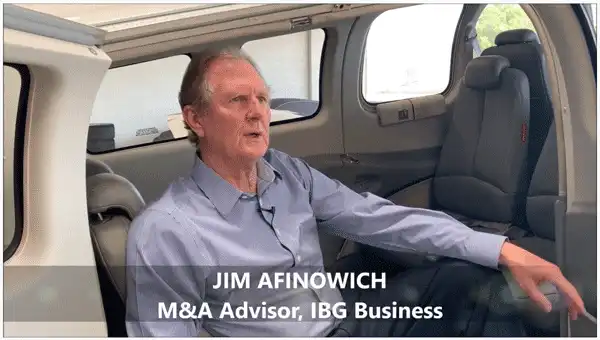View "How to Get Top Dollar for Your Company," by Jim Afinowich (2:01)
How to price your business - and build an auction environment for its sale
IBG Fox & Fin • October 25, 2021
Attracting interest from more than one candidate not only generates multiple offers and shifts the leverage to you; it can also reveal your “best fit” buyer.
How you arrive at a market value for a company is an interesting topic. Most sellers believe they know what their company is worth, and usually they're wrong. The market is what actually determines the market value.
We can look at it and give them a range of price, a range of value, but you're not going to know for sure until you have multiple offers for a company.
Basically, a company is worth some multiple of its earnings. In the simplest form you have some multiple of your earnings that a buyer is going to look at and say, "This is how much money I'm going to make in the future if I own this, and here's the rate of return that need to get on my money, and so therefore this is what I'm willing to pay for it."
We get top dollar for a company by first planning in advance. Ideally I like to talk to potential sellers two to three years before we're going to market, to prepare the company for sale. It's kind of like selling a house; you put a fresh coat of paint on it before you put it on the market. So we want to do that with the business. Then when the business is prepared for sale, you run an auction process; you get multiple buyers, and you make sure that they know there's competition and that they're going to have to pay what the market will bear at the far end if they're going to be the winning bidder.
Creating an Auction Environment
At IBG, we have a saying: “One buyer is no buyer.” If a potential buyer is the only horse in the race, that gives him power and leverage over the seller.
As we discussed in in our August 10, 2021, post (“To Get Top Dollar for Your Business, Create Buyer Competition”), when you go to market without a price – which is our approach – it is very important to create an auction. To create an auction environment, we start out with good research, identifying a good selection of potential buyers – maybe a good synergistic buyer, maybe a financial buyer, maybe an industry buyer.
Attracting interest from more than one candidate not only generates multiple offers and shifts the leverage to you; it can also reveal your “best fit” buyer – someone who, in addition to offering an attractive price and favorable terms, appears to share your values and seems likely to take good care of your company and its customers and employees.
When you run an auction, it's kind of like running a horse race where you want all of the horses to end up at the finish line at the same time. We try to enforce very rigid rules; we have schedules and deadline that buyers have to meet, so that they know that they are in a race, there are other people next to them, and they had better give it their all if they want to get be the first to reach the finish line – even if it means paying more than they originally intended.




